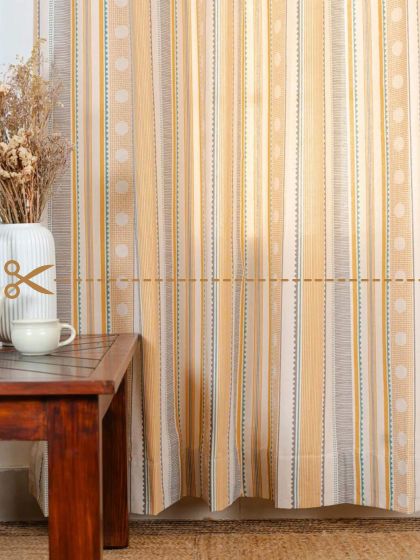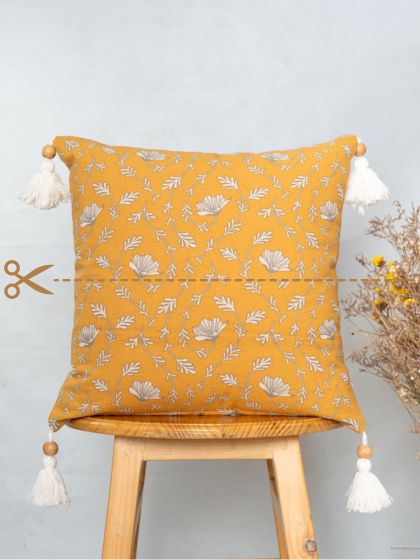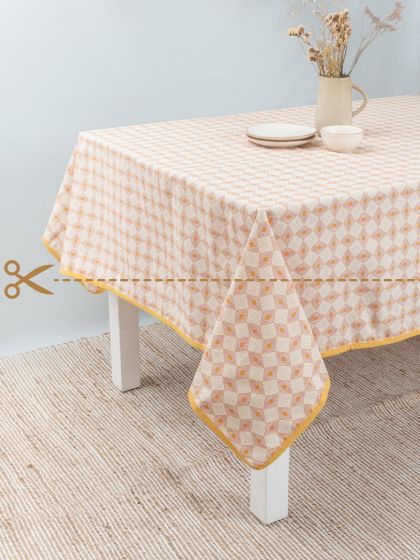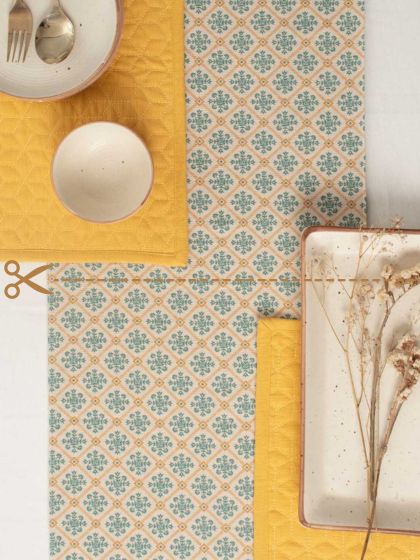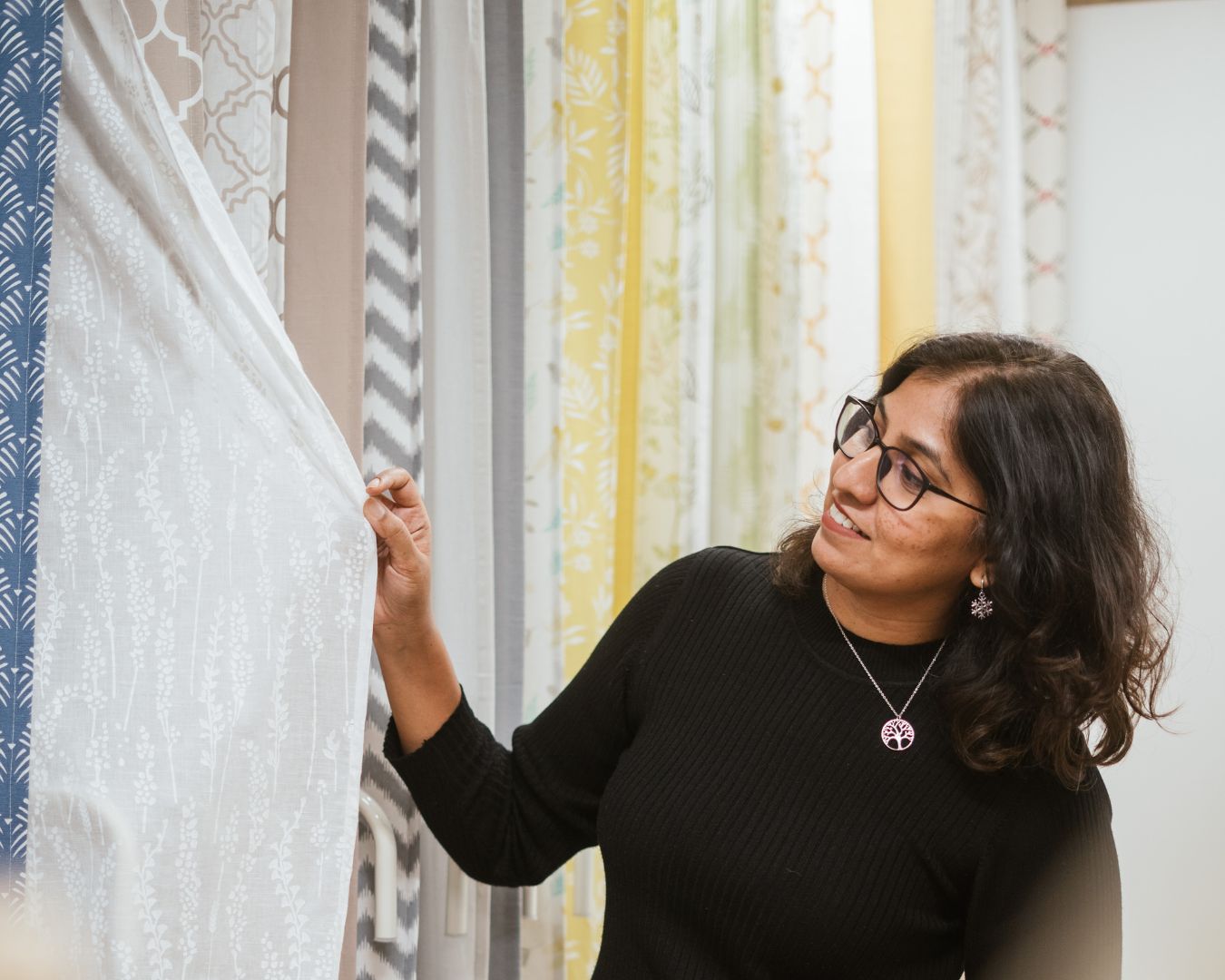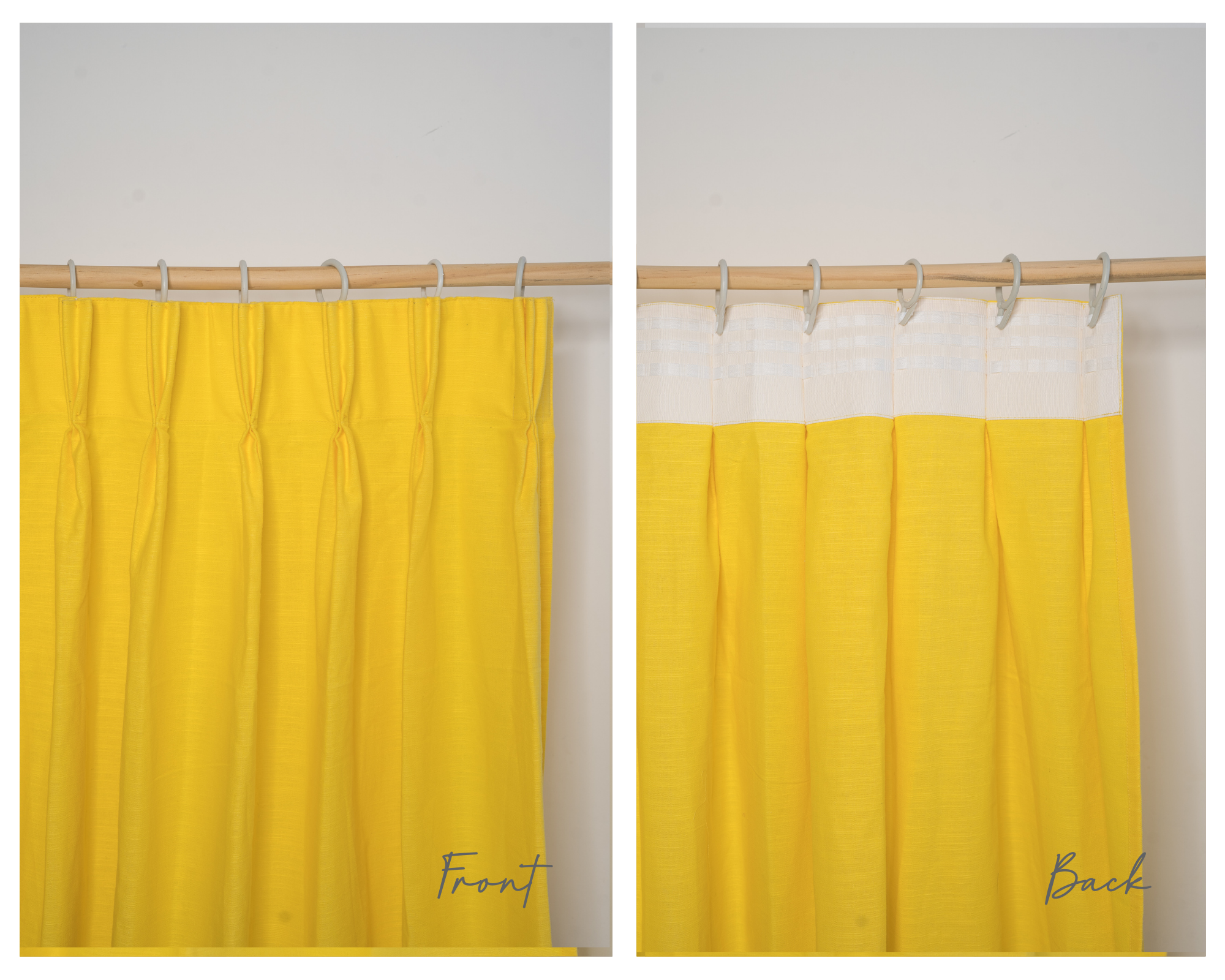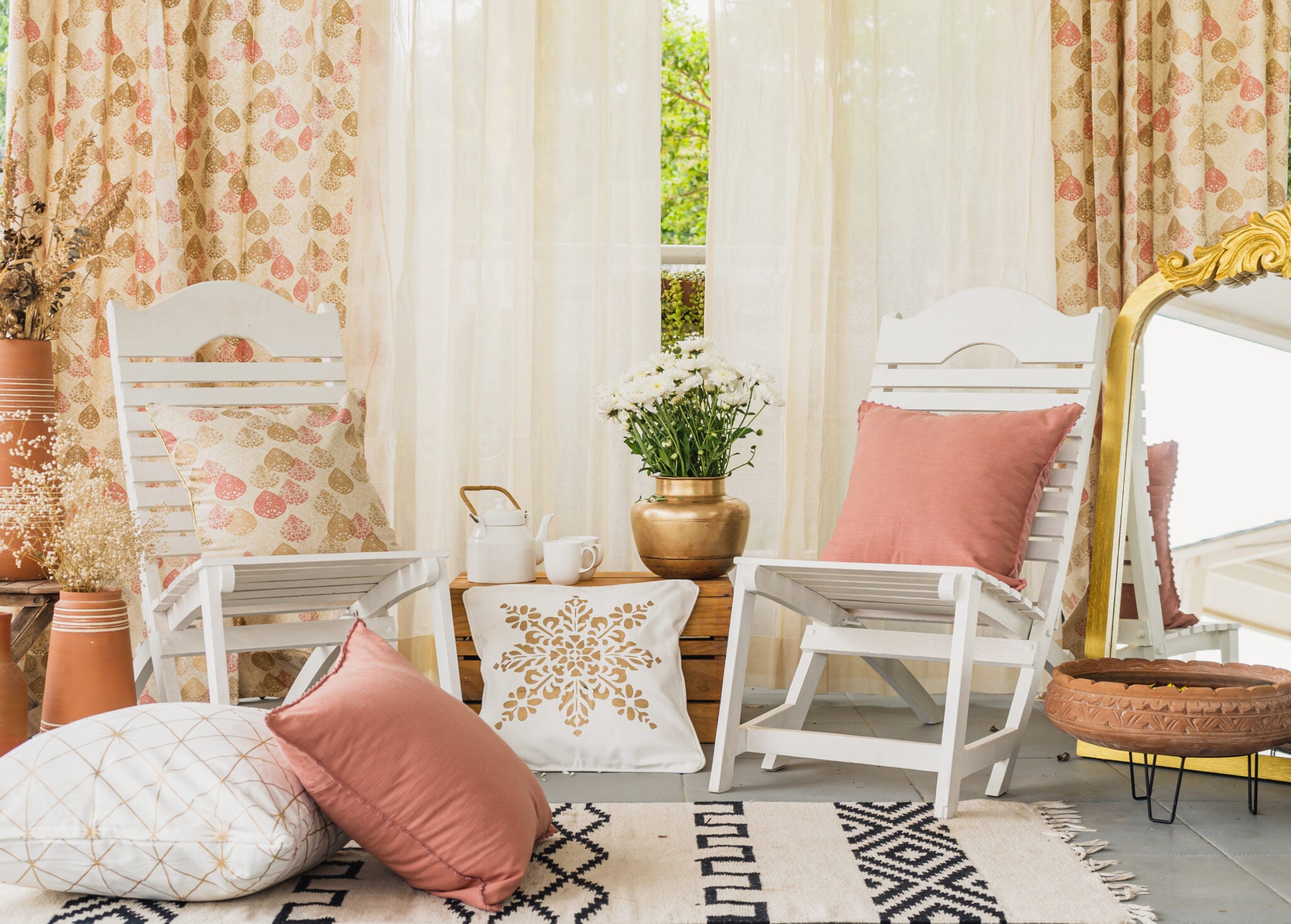Here is your ultimate guide to buying your curtains online in India.
Choosing the right curtains and measurements can be a bit overwhelming at times. Additionally buying curtains online can be a daunting task. Given our tight schedules, we may often overlook some of the important aspects of curtains and their measurements.
From our experience of furnishing over 25,000 homes in the past 6 years, we have compiled this comprehensive guide that will help you with choosing the right fabric, the right header style for your curtain, the right hanging length and light blocking aspect of curtains.
Our expert tips and tricks will help you find curtains that not only complement your existing decor but also enhance the overall ambiance of the room. Pay attention to the expert information on buying curtains online and how to measure before placing your order. We have shared valuable insights on curtain lengths, hanging techniques, and maintenance tips to ensure your curtains look their best for years to come.
1. Choosing the right fabric for your curtains
The choice of fabric for your curtains not only affects their appearance but also determines their functionality and durability. Each fabric has its own unique characteristics, so it's essential to select the one that best suits your needs and complements your overall decor. Here are some popular curtain fabric options to consider:
- Cotton: Cotton is a versatile and widely used fabric for curtains. It is lightweight, breathable, and easy to care for. Cotton curtains are available in a wide range of colors, patterns, and textures, making them suitable for various decor styles. Cotton curtains and sheer curtains provide a casual and relaxed look, perfect for creating a cozy and inviting atmosphere.

2. Linen: Linen curtains have a natural and organic look that adds texture and depth to any space. They are made from flax fibers and have a slightly rough texture, giving them a rustic and earthy appeal. Linen curtains are highly durable and offer excellent insulation properties, making them ideal for both summer and winter months. While buying linen curtains online check for the authenticity of the brand and also the linen cotton blend ratio. Check our linen curtains online.

3. Sheer curtains: Sheer fabrics, such as chiffon or voile, are lightweight and translucent, allowing natural light to filter through while still providing privacy. Sheer curtains also called translucent curtains create an ethereal and romantic effect, making them ideal for spaces where you want to maintain a sense of openness and airiness. Sheer curtains can be used alone or layered with heavier curtains for added texture and depth.

Shop our cotton sheer curtains
- Silk: Silk curtains exude luxury and elegance. They have a smooth and lustrous appearance that adds a touch of sophistication to any room. Silk is a delicate fabric that requires special care and maintenance, but the result is well worth it. Silk curtains are perfect for formal and upscale spaces, creating a sense of opulence and grandeur.
- Velvet: Velvet curtains have a luxurious and plush texture that adds a sense of richness and warmth to any space. They are made from densely woven fibers that create a soft and smooth pile. Velvet curtains provide excellent light control and insulation, making them suitable for bedrooms and living rooms where privacy and temperature regulation are important.
- Polyester: Polyester curtains are a practical and cost-effective option. They are durable, easy to care for, and resistant to wrinkling and fading. Though they are budget friendly, the downside of this fabric is that they are not an eco-friendly option and they emit micro-fibres into the air.
Consider the desired look, functionality, and maintenance requirements when choosing the fabric for your curtains. Each fabric has its own unique characteristics, so take the time to explore different options and select the one that best suits your needs and enhances the overall aesthetic of your space. Next, let's explore the world of curtain hardware and accessories.
2. Choosing the Curtain hardware and accessories
Curtain hardware and accessories play a crucial role in the overall functionality and appearance of your curtains. From curtain rods and rings to tiebacks and finials, these elements add a finishing touch and help create a cohesive and polished look. Here are some popular curtain hardware and accessories to consider
Curtain rods: Curtain rods provide the structural support for your curtains and help them hang properly. They are available in various materials, such as wood, metal, and acrylic, each offering a unique aesthetic appeal. An important point to note is that all the styles of curtain like grommet, eyelet, backtab, pleated, pocket rod, button loop and tab top will work on the rods.
Curtain tracks : Curtain tracks are another popular hardware used to hang curtains. They are more sophisticated look, often preferred by the interior designers. There are automated and motorised versions of tracks available too. An important point to note is the only a few header styles work on this hardware. You have to choose from pleated, channel tape or ripple fold curtain header style.
3. Where to install the rods or tracks?
Ceiling level : The most preferred way to have a grand look is to install the rods all the way till the ceiling or roof and the entire width of the wall. You can opt to have a pelmet of false ceiling to create a in lay and hide the hardware. This is the most popular way amongst interior designers. This works for large spaces and living rooms. This gives an illusion of a large window and a luxurious look, looks good on large and open spaces.
If the space is compact (smaller rooms) or you have ACs above the window or you don’t have space along the width (like its positioned next to a wall) its ideal to have your rods fixed about 4 to 6 inches above and besides the window. This has stability and at the same time will make your windows look large at the same time not taking up too much space.
Don’t : Never drill the rod right above the window or right outside the width of the window with only an inch or two gap because, the rods don’t have much stability and may not take the weights of the curtains. Secondly, it makes the window look cramped and tiny.

Tip : Always get the rods done first and then do the measurements. And always carry the measurements with you when you go curtain shopping.
4. Measuring your windows for curtains
Before you start shopping for curtains online or at retail stores, it's essential to measure your windows accurately. Proper measurements ensure that your curtains fit perfectly and hang beautifully, creating a polished and professional look. Here are the steps to measure your windows for curtains:
- Width measurement:
Start by measuring the width of your window frame from left to right. Decide on how much of the wall space you need to cover, for example if you want to cover the whole width of the wall to give a fuller look, you can have the rod or track fixed for the entire width of the wall.
If you don’t wish to cover the entire wall but want your curtains to cover the entire window when closed, then add an additional 4 to 8 inches on each side for proper coverage. This extra width allows the curtains to stack neatly when open and ensures they fully cover the window when closed.
Once you have measured, check the width of the curtains you are buying. Usually curtains offer half the coverage of their width. For example our curtains are 60” wide and provide coverage of 30” when hung with gatherings. If you choose pleated curtains, the coverage is further reduced to 25”. Please refer table below to understand how many curtains you would want for your curtain width.
Another important point to note is we always recommend curtains to be hung in pair as they offer visual symmetry when drawn out.
2. Length measurement:
Once you are done with the width and determining the number of panel you need, you need to find the length of the curtains you will need. These measurements will help you ascertain if you want window length curtains or door length curtains or extra long curtains.


Measure the length of your window from the top of the frame to the desired curtain length. Depending on your preference, curtains can be floor-length, window sill-length, or puddle the floor. Depending on the desired length, measure from rod or track till the preferred height. Refer infographic below for better understanding.

By following these measurement guidelines, you can ensure that your curtains fit perfectly and achieve the desired aesthetic effect. Now that you have the measurements, let's explore the world of curtain styles and designs.
Explore our range of customized curtains here.
5. Choosing the header style for your curtain
1. Grommet / Eyelet
This is the most popular style used in the curtains. This style offers a more contemporary and crisp look due to their clean gatherings. This comes with 10 rings, and offers very easy hanging and the curtains fall in clean vertical lines. Used widely in the main curtains when there is a double rod. Recommend this if you are looking for simple and mess free hanging. They are easy to draw the curtains in or out.

2. Pocket rod
This simple style often costs less and gives a ruffled look that is more casual. The fabric ruffles at the top and gives small gathered fall to the curtain. The fall is casual with ruffled small gatherings. This style hides the rod, and is intended for a casual chic look. If you wish to use this style do consider using a tie back to let more light in (since movement is restricted)

3. Back tabs
Back taps also offer a clean crisp look. This style offers clean and large gatherings. One of the advantages of this style is that it hides the rod and gives you a fuller look. It gives a wave kind of fall like the grommet. Movement is a bit constrained, as the tabs are made of fabric and there is more friction. Consider using a tieback to let light inside.

4. Channel tape
This is ideal when you have a channel track. This style offers a clean look and goes with any décor style. The channel tape is stitched on to the curtain, which can then be either hung on the rod or the channel using hooks. The plain channel tape gives a wave pattern and is also called wave style. This style also hides the rod and offers a clean look.

5. Pinch pleated
Pleated curtains offer a more traditional, grand and formal spaces. They add grandeur and the curtain falls with more defined pleats than grommet or back tabs. The pleats are made by folding the curtain in pleats and stitched together, they are hung using a hook or a pin. They are usually used for channels, but can also be used on rods. Remember pinch pleated curtains consume more fabrics and panels.

6. Button tab
The button tab style is simple and classic. The tab is ended with a button giving a beautiful traditional look. Ideal for curtains used on poster beds. The fall is neat with crisp gatherings. Goes with traditional and modern setups.

7. Tie tap
This header style has two loops at the top, that can be used to tie at the tip. This offers a casual style. Ideal for bedrooms and poster beds, this styles offers a chic look.

Read our in-depth blog on the different header style and their benefits here
6. Choosing the light block lining
An important aspect to understand and consider is the different light block capabilities of fabrics.
- Light filtering : Sheer curtains, voile curtains come under the light filtering category. They block about 20% of light, giving you ample light inside your room at the same time ensuring your privacy. Opt for light filtering curtains for rooms that get very less natural light.
- Room Darkening : Cotton curtains and medium thickness curtains offer about 50 to 60% light block and hence are classified as room darkening curtains. These room darkening curtains are ideal for living room, dining rooms where you get a lot of direct sunlight.
- Light block curtains : If you wish to block more light you can opt for 75% light block lining or 100% light block lining. These curtains are called blackout or block out curtains and offer 100% light block. This is ideal for bedrooms that are east or west facing and receive harsh direct sunlight and entertainment rooms.
Shop for our light block curtains here. They are added as lining, attached and detached block out lining as per your preference.

Hope this complete guide on how to choose your curtains while you are buying online helps you. Do remember to choose your fabric, Choose your hardware, choose where to drill your rod, measure your window, pick your headers style and choose your light block lining wisely based on all the information we have given you here!

